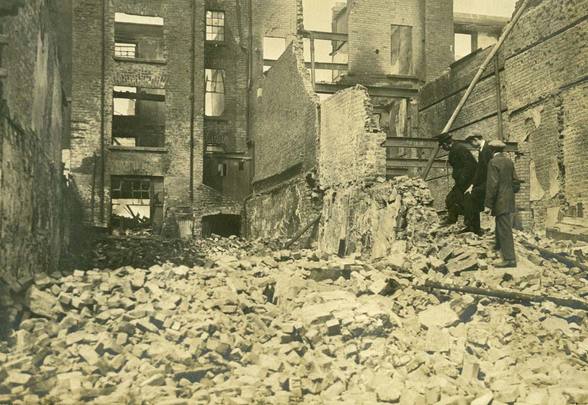Not only did the rebellion have a huge effect on the Irish fight for independence but it drastically changed Dublin City itself, terribly damaging many of the capital's most prominent buildings.
British Pathé newsreels from 1915 and 1916 show the shocking destruction caused to Dublin’s city center by the 1916 Easter Rising.
The newsreel, now available on YouTube, from the pioneers of the moving pictures, documents the finery of Dublin’s streets in 1915 with Dubliners going about their business and trams milling about the streets to the dismal destruction following the armed insurrection of Easter Week in 1916.
The Easter Rising, mounted by Irish republicans to end British rule in Ireland and establish an independent Irish Republic, came while the United Kingdom was heavily engaged in World War I. It was the largest rebellion in Ireland since 1798 and although it ended in unconditional surrender and the execution of the rebel leaders, the manner in which the British dealt with the rebels caused an upsurge in nationalist feeling among the Irish people, causing them to abandon the hope of Home Rule and to turn instead to the more radical Sinn Féin party in the hopes of establishing a Republic.
This British Pathé newsreel shows what Dublin looked like the years before:
Pathé’s description of the clip, Dublin Scenes (1915), reads:
“Opens w/ shot of base of Wellington monument in Phoenix Park, Dublin, w/ a few people on steps Closer of same. DS Guinness beer barge on river. The Bank of Ireland building w/ tall pillars. Pan around this building. More shots of building from various angles. Here begins series of shots of Dublin Streets w/ many shops, including Lipton factory or warehouse.”
War In Ireland - Easter Rebellion (1916), as the next clip is called shows very different scenes.
The Rising lasted six days and began on Easter Monday, April 24, 1916. The historic rebellion was organized by seven members of the Military Council of the Irish Republican Brotherhood. Members of the Irish Volunteers seized key locations in Dublin and proclaimed Ireland a republic.
The British had vastly superior numbers and artillery, however, and the Rising’s leader Pádraig Pearse agreed to an unconditional surrender on Saturday, April 29.
Here is footage of the aftermath:
Pathé’s description reads:
“Ruins of bombed & burned buildings; people walking past. Much destruction. Crowds milling around or walking past outside central post office building; where the rebels set up headquarters. Barricade in street - all sorts of furniture; etc. Automobile abandoned. Several people watch as part of building collapses; sends up big cloud of smoke (it was pulled down on purpose so it wouldn't collapse on someone by accident).
“Irish Transport & General Workers Union building. Soldiers at door of same. CU Man holding up flyer: Irish War News.”
Pathé News newsreels, cine magazines, and documentaries span from 1910 until 1970. Its collection of news films and movies is fully digitized and available online. To view more of the collection visit: www.youtube.com/britishpathe.
You can read more of IrishCentral's Easter Rising coverage here.
* Originally published in 2016, updated in April 2024.




Comments